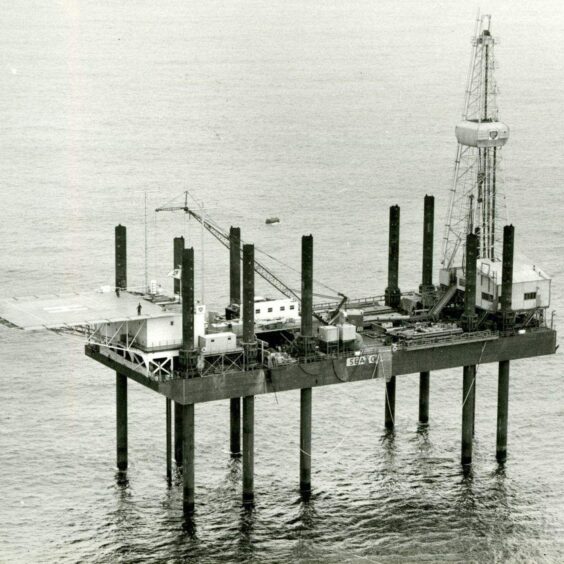Today marks the 57th anniversary of the Sea Gem disaster that claimed the lives of 14 North Sea workers.
The rig, which was owned and operated by BP, was in the process of being moved to a new location when all went wrong.
The jack up rig’s rear legs collapsed under the harsh conditions of the north sea, causing the installation to capsize.
It was supported on 10 steel legs that were 50 feet tall and as two gave way people and equipment were plunged into the North Sea’s icy winter waters.
The 32 men working on the Sea Gem were trapped inside with no way to send for help, 18 of the men on the platform that day survived.
To mark the anniversary of the disaster, BP invited the only remaining survivor of the tragic event, Mr Kevin Topham, to its North Sea headquarters.
He explained that he had just finished his Christmas dinner when he heard the crack of the legs failing, and felt the rig start to tilt.
Mr Topham Described how furniture slid along the floor and doors could not be opened as the steel structure buckled and twisted.
The survivor saw a colleague battling the stormy freezing waters to a life raft only to succumb to the arctic conditions.
Senior Vice President of BP North Sea, Doris Reiter, said: “Safety is always bp’s top priority and I was recently honoured to welcome Mr Kevin Topham, the last remaining survivor, to bp North Sea to share his story and unveil a memorial to commemorate the pioneering Sea Gem crew.
“Our industry has made tremendous progress in the six decades since, and Sea Gem led to critical changes in the UK oil and gas safety regime, including the establishment of the OIM role and the introduction of standby vessels.
“Mr Topham’s moving personal testimonial struck a deep chord with us all at bp and is a powerful reminder of why we must always remember, always learn, and always improve.”
Weighing 5,600 tonnes, the platform was made from a steel barge and had a drilling platform, living quarters and a helicopter landing pad.
At the time it was reported that men were seen jumping into the freezing cold sea.
On the night of the disaster in 1965, the waves in the North Sea were reported as reaching heights of up to 2o feet.
The enquiry into the incident led to changes in the industry such as the creation of t
he offshore installation manager position and the requirement for standby vessels.
The same month of the tragedy the Sea Gem made UK continental shelf history the Sea Gem became the first rig to light a flare over the North Sea.
Recommended for you


 © Supplied by AsPac at BP
© Supplied by AsPac at BP